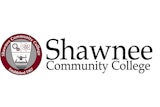WEST BURLINGTON, Iowa— A community college in southeast Iowa has created a wetland on its campus to filter runoff from college-owned farmland and provide a learning tool for students and farmers.
The wetland on Southeastern Community College’s West Burlington campus will typically be between 1.5 to 2 acres, The Hawk Eye reported. It could be as large as 9 acres during heavy rain, said Sabrina Pidgeon, an agriculture instructor at the college.
The wetland is located on the school’s agriculture field primarily used for corn and soybeans.
“It’s not the ideal location for a wetland in general, but it is the ideal location for educational purposes,” Pidgeon said.
Pidgeon said her students will test the water to monitor nitrate levels. They’ll also be able to observe wildlife including water fowl, amphibians, insects and plants.
“I like to call it our living lab. We’ll be constantly learning out there,” Pidgeon said.
The Natural Resources Conservation Service surveyed the area, constructed the wetland and created a water control structure. The structure controls the amount of groundwater in the soil and the wetland’s water level.
The Iowa Farm Bureau Federation obtained a $10,000 grant for the project. John Sandbothe, a regional manager at the bureau, approached the college and the Des Moines County Farm Bureau with the idea to create a wetland on the college’s campus.
“It’s a good way to showcase conservation and water quality practices for other farmers and also understand what farmers are doing to protect our resources,” Sandbothe said.
The wetland also features grass, cattails and other water-loving plants that transform nitrates into harmless nitrogen gas. Nitrogen and phosphorus can also be absorbed by wetland soil. Most of the nitrates and other nutrients are soaked up by crops, which cuts down on nitrate runoff.









